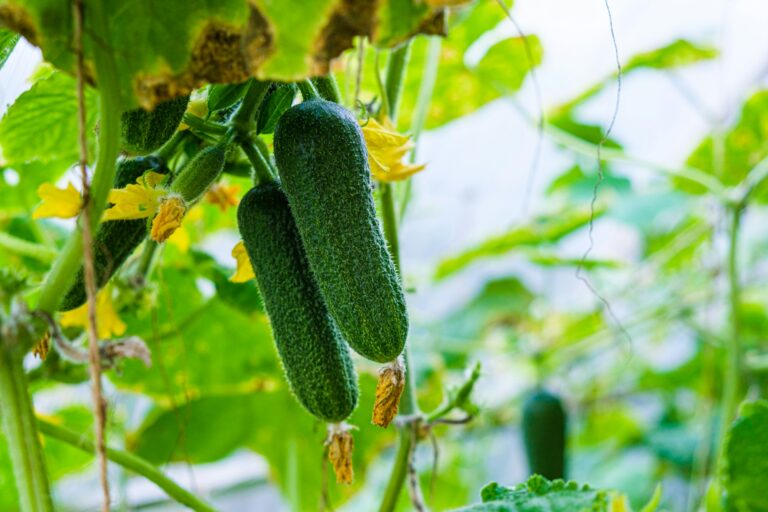Grow and Care for Loquat Trees: Everything You Need to Know

Have you ever thought about adding a unique and delicious fruit tree to your garden? Look no further than the loquat tree, also known as Eriobotrya japonica. This evergreen beauty not only produces amazing flowers but also offers scrumptious fruits that are hard to find in commercial markets. In this comprehensive guide, we will cover everything you need to know to successfully grow and care for loquat trees in your garden.
What Are Loquat Trees?
Loquat trees are native to China and thrive in USDA Zones 8 to 10. They are members of the rose family and can grow to be 10 to 25 feet tall and wide. These trees are known for their beautiful flowers that bloom in fall to early winter and produce delicious fruits in late winter to early spring.
The fruits of the loquat tree are round or pear-shaped with yellow to orange skin and sweet, slightly acidic flesh. The unique flavor has been compared to a combination of plum, lemon, apricot, cherry, and grape. The fruits are rich in vitamins, minerals, and dietary fiber, making them a healthy and tasty addition to your diet.
However, it is essential to remove the seeds before consuming the fruits, as they contain mildly poisonous cyanogenic glycosides. The tree’s evergreen leaves are long and narrow with a dark green color, adding to the tree’s aesthetic appeal.
Cultivation and History
Loquats have a rich history that dates back over two millennia in southeastern and central China. They were brought to Japan over 1,000 years ago and have since been cultivated there, earning the tree the nickname “Japanese plum.”
The leaves of the loquat tree were traditionally used in Chinese medicine to treat chronic bronchitis and are also consumed in tea for their health benefits. The tree was introduced to other regions like the Philippines, Spain, France, and England in the 17th and 18th centuries, making it a popular choice among gardeners worldwide.
Today, loquat trees are grown for their fruits as well as their ornamental value. They make a stunning addition to any garden or landscape, producing both beauty and delicious fruits.
Loquat Tree Propagation
The best way to acquire a loquat tree is to transplant a grafted or budded specimen. Growing a tree from seed is unpredictable and time-consuming, with a grafted or budded tree producing fruits much sooner. Plant nurseries are the best place to find grafted specimens, as they have the expertise needed for successful propagation.
Transplant the tree in early spring after the last frost date, ensuring a well-draining soil with a pH of 6.0 to 7.0. Regular watering and fertilization will help the tree establish and produce abundant fruits within a few years.
How to Grow Loquat Trees
Loquat trees thrive in USDA Zones 8 to 10, with full sun exposure being ideal for fruit production. The soil should be fertile and well-draining, with a pH of 6.0 to 7.0. Regular watering and fertilization will help the tree grow and produce healthy fruits.
Pruning and maintenance are essential for maintaining the tree’s health and shape, removing any dead or damaged branches as needed. Mulching around the tree will help conserve moisture and suppress weed growth, while regular cleaning of fallen leaves and fruits will prevent disease spread.
Loquat Tree Cultivars to Select
While standard loquat trees are excellent choices for fruit production, there are a few cultivars that offer unique flavors and appearances. Champagne, Gold Nugget, and Variegata are popular cultivars that provide tasty fruits and stunning aesthetics for your garden.
Managing Pests and Disease
Like any plant, loquat trees are susceptible to pests and diseases that can affect their health and fruit production. Birds, aphids, scale, spider mites, fire blight, leaf spot, and scab are common issues that gardeners may encounter when growing loquat trees.
Effective pest management strategies include using physical or chemical deterrents for birds and applying insecticidal soap or horticultural oil for aphids, scale, and spider mites. Disease prevention involves maintaining good sanitation practices, removing infected plant parts, and using fungicides as needed.
Best Uses for Loquat Trees
In addition to being a delicious fruit producer, loquat trees have many other uses in the garden. They make stunning ornamental plantings, accents, street trees, or even houseplants. The flowers and leaves of the tree can be used in floral arrangements, adding beauty and fragrance to the home.
Harvesting Loquat Fruit
Loquat fruits should be harvested when they are fully ripe, which usually occurs in spring, about 90 days after the flowers bloom. Ripe fruits should be slightly soft with a yellow to orange color. Use pruners to gently harvest the fruits to avoid damaging them.
Preservation of Loquat Fruit
If you want to enjoy loquats for an extended period, you can freeze the fruits or make tasty jams. Freezing loquats involves washing, removing stems and seeds, and storing them in a syrup solution in airtight containers. Alternatively, you can make jam using the fruits’ natural pectin for an easy and delicious preservation method.
Recipes and Cooking Ideas
Loquat fruits can be used in a variety of culinary creations, from desserts to dressings. Try an apple crumble, refrigerator pickles, or a tasty vinaigrette featuring fresh loquats for a unique and flavorful twist on traditional recipes.
In conclusion, growing and caring for loquat trees can be a rewarding experience for any gardener. With their unique flavor, beautiful flowers, and easy cultivation requirements, loquat trees are an excellent addition to any garden or landscape. Whether you’re a fruit enthusiast or a seasoned gardener, loquat trees offer endless possibilities for culinary and aesthetic enjoyment. So why not give them a try in your garden today?
Remember, if you have experiences with growing loquat trees or any additional tips to share, feel free to leave a comment below. Happy gardening!
Additional Resources
- How to Grow and Care for Avocado Trees – How to Grow and Care for Olive Trees – How to Grow Beautiful and Productive Fig Trees
This detailed guide covers everything you need to know about growing and caring for loquat trees. With a focus on cultivation, propagation, pests, diseases, harvesting, recipes, and more, this article provides valuable information for gardeners looking to add this unique and delicious fruit tree to their landscape. Whether you’re a seasoned gardener or a fruit enthusiast, loquat trees are a fantastic choice for both beauty and taste in your garden. Happy gardening!





